Flowers for honey
Fantastic selection of plants and trees for bees that can be found in Spain and other Mediterranean countries. This compilation, called here flowers for honey, provide very nutritious food for our bees. Furthermore, you can also plant them in your garden to help them. Also, thanks to them we have our fantastic raw hones that you have at your disposal in our shop in Las Rozas de Madrid. Also, many of these plants are medicinal, so you can use them also in the kitchen or in the elaboration of natural cosmetic products. Therefore, fantastic plants that we should always have close to us.
Index:
|
Summary: Flowers for honey, a collection of plants that provide food for bees because they are abundant in pollen and nectar. They also provide us with honey and pollen. Therefore, growing and caring for these plants is a fantastic way to support honeybees. Consequently you will protect our nature and avoid its extinction. Also, in our shop in Las Rozas de Madrid you have at your disposal this monofloral and multifloral honeys of many of them.
Other interesting articles: Good honey will come out of theses flowers
1. A contributio to save the bees; plant the flowers for honey production
Not all flowers are useful to bees, only honey flowers. Honey flowers are those which provide them nectar and pollen in sufficient quantities to feed the colony. Moreover, among the nectar-bearing flowers, bees prioritise the ones that gives them more nectar and pollen. Furthermore, it is not only nectar that attracts bees. Sometimes, bees also visit flowers solely for their pollen, as in the case of poppy flowers.
Here is a small selection of honey plants and trees that feed bees in Madrid. Most of them can be found in the rest of Spain.
Likewise, all these plants that we show you here can be planted in your garden, terraces or windows. These beautiful plants will help bees and nearby beekeepers. In addition, many of them are medicinal and have a great versatility of uses, both food, curative and cosmetic. In short, they are magnificent plants that are always worth having close by.
a) Rockrose
This plant is colled Rockrose and it is a very common plant that grows in the holm oak groves of Spain. It is a evergreen shrug and when a field has been burnt by fire, it is one of the first plants to emerge. It is also very common in Madrid.
Here, in the photo below, we can see the flower of a rockrose and a bee on its petals. Furthermore, rockrose flowers are beautiful and have the peculiarity that they bloom quickly and in a couple of days at most, their petals fall off. Honeybess love these flower for its abundant pollen. However, they have no nectar, so no rockrose honey is produced.
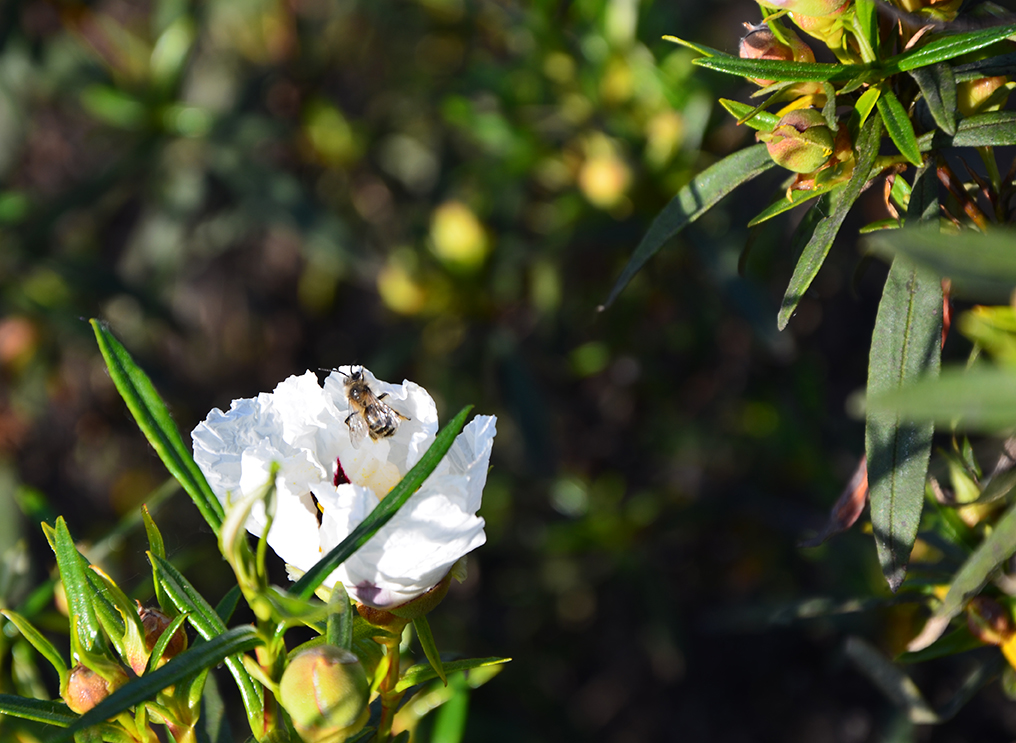
Photo 1: Flower of a rockrose with a bee resting on it
This photo was taken on a spring day near our shop in Las Rozas de Madrid.
b) Lavender
Lavander is another fantactic plant for bees, which is planted in many gardens and fields of Spain. This plant provide great nectar for bees in Spring and Summer. Also, it stands out for the powerful aroma of its leaves and flowers. Flowers and leaves that are used for medicinally proposes. Consequently, it is highly appreciated by bees and humans, and a must-have plant for a garden.
With this nectar, bees produce lavander honey, one of the most loved honeys in the world. A honey with a very appreciated aromas and floral scents.
In other hand, there are numerous species of lavender; english lavender, french lavender, portuguese lavender and lavandn. All of them belong to the Lamiaceae family.
Focusing on the visual, here below you can see a bee flying, which is on its way to pollinate the wild lavender flowers.
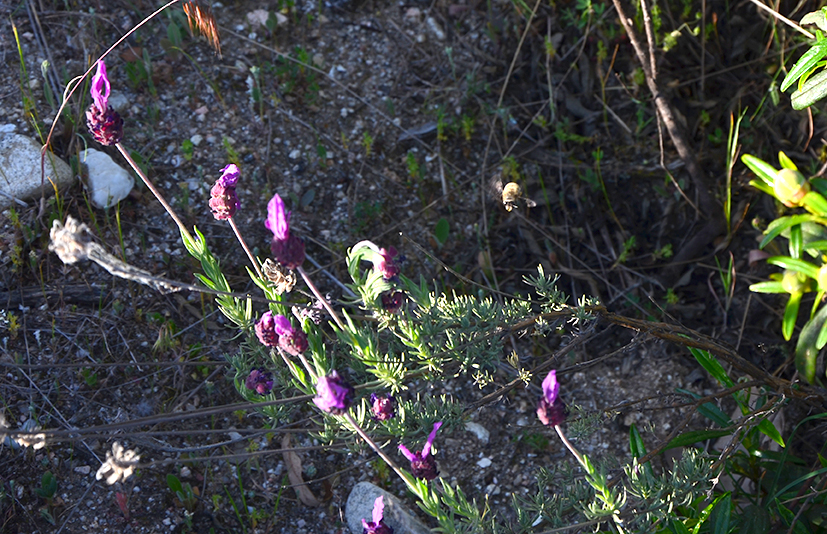
Photo 2: Bee heading for lavender flowers
c) Holm oak
The holm oak is a evergreen tree and native to the Mediterranean. The holms oaks are pollinated by the wind because their flowers do not produce neither nectar nor pollen edible for bees. However, bees suck the molasses that come off its holm oaks fruits and with these molasses honey is made.
Holm oak honey has a dark color with a strong flavor and malty notes. Also, this honey is rich in iron. For this reason, so many people appreciate this honey.

Photo 3: Holm oak in bloom and growing
These small flowers we see below are not from a plant that I don’t know what it is called, but it is often cultivated in gardens and at this time of year it is full of flowers. It must also be melliferous, as you could hear some bees passing from flower to flower.
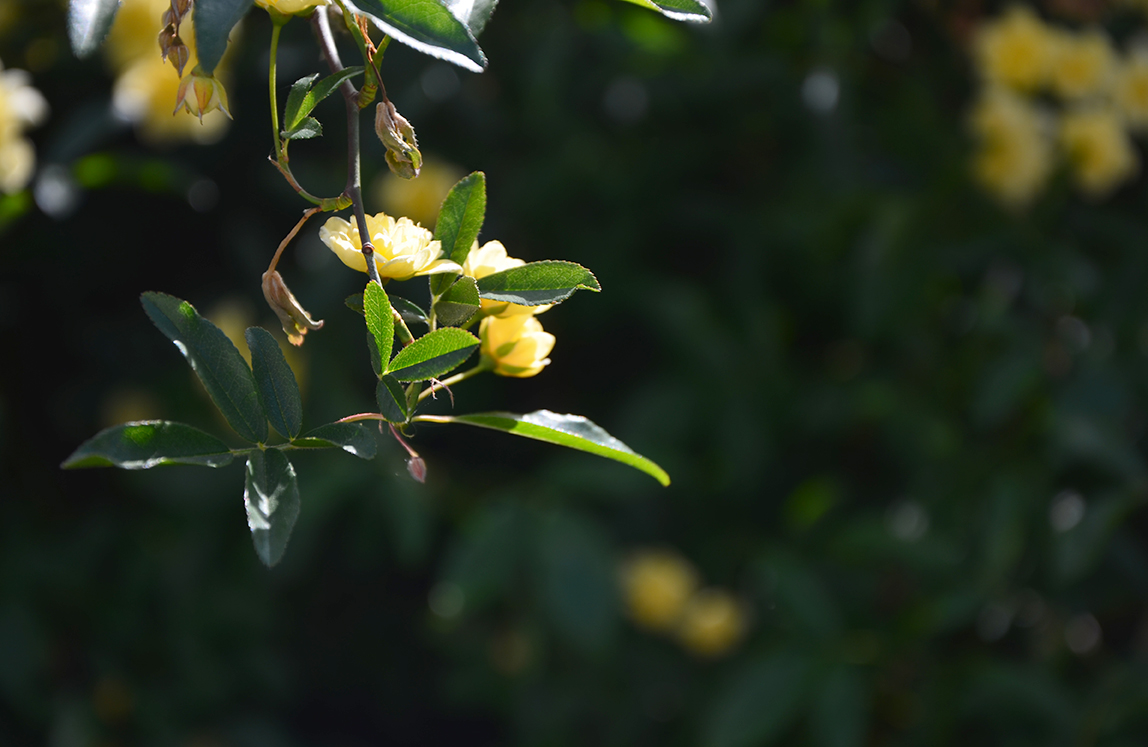
Fhoto 4: Garden flowers
d) Poppy
Poppy is a plant that can be found in so many countries and are annual or perennial depending on the species. In Spain we can find it very often. The poppies grows in well drained soil and in sunny places. However, the overuse of herbicides has limited its presence in Europe, but they are reappering again.
Poppy flowers are a excellent pollen source but they do no have nectar. Furthermore, the poppy pollen is very nutritional and helps to strengthen the bees’ immune system of the bees.

Fhoto 5: Poppy flower
e) Marigolds
Earlier this year I planted marigolds, which you can see in the photo below. These I have planted for ornamental purposes, although I don’t know if they will help the bees much.
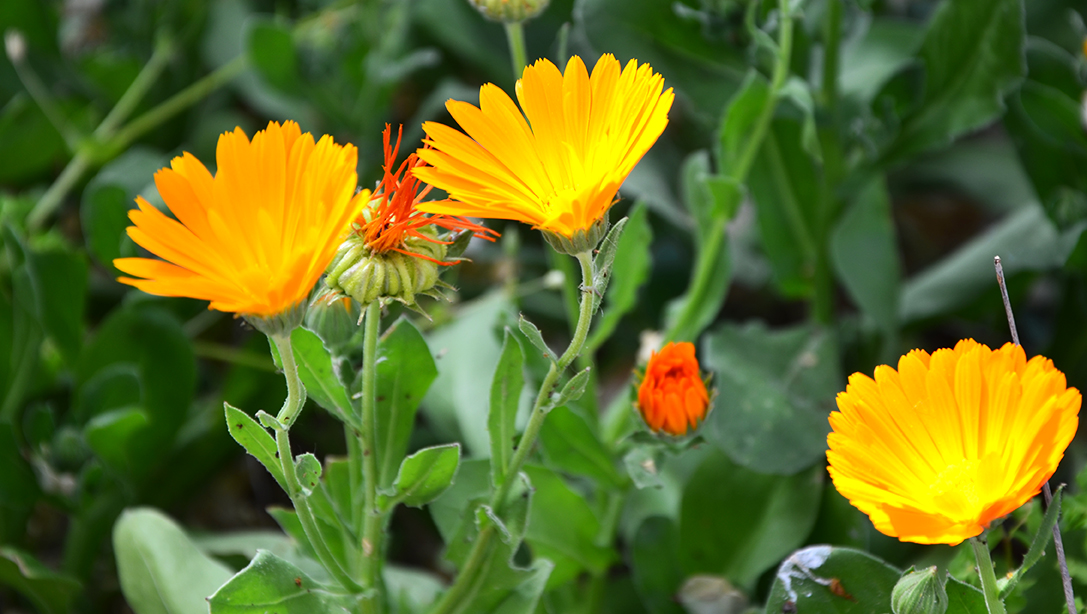
Photo 6: Marigold flowers
b) Citrus trees
Citrus tress are self-pollinating trees, but they benefits from cross-pollination from bees. Furthermoe, the citrus flowers like lemond and orange flowers are rich in nectar.
Also, citrus trees are evergreen trees that comes from Southeats Asia and was brought to Spain by the Moors. We can found them in the east and south of Spain. Also, this tree has become an evocative imagen of Spain with its pleasent perfume and juicy fruits.

Photo 7: Orange blossom
These orange trees are located in Madrid, a place with a very cold climate so that the orange trees can survive the winter. The orange trees are planted in large pots, so that in winter they can be brought indoors and protected from frost.
What I like most about orange blossom is its pure white colour. Another of the delights of enjoying this flower is its scent.
g) Lavender
In Las Rozas de Madrid we are lucky enough to enjoy many natural spaces covered with holm oaks, rockrose and lavender. During the Easter holidays I had the opportunity to walk through them and I often found lavender, among many of them, I photographed this one.
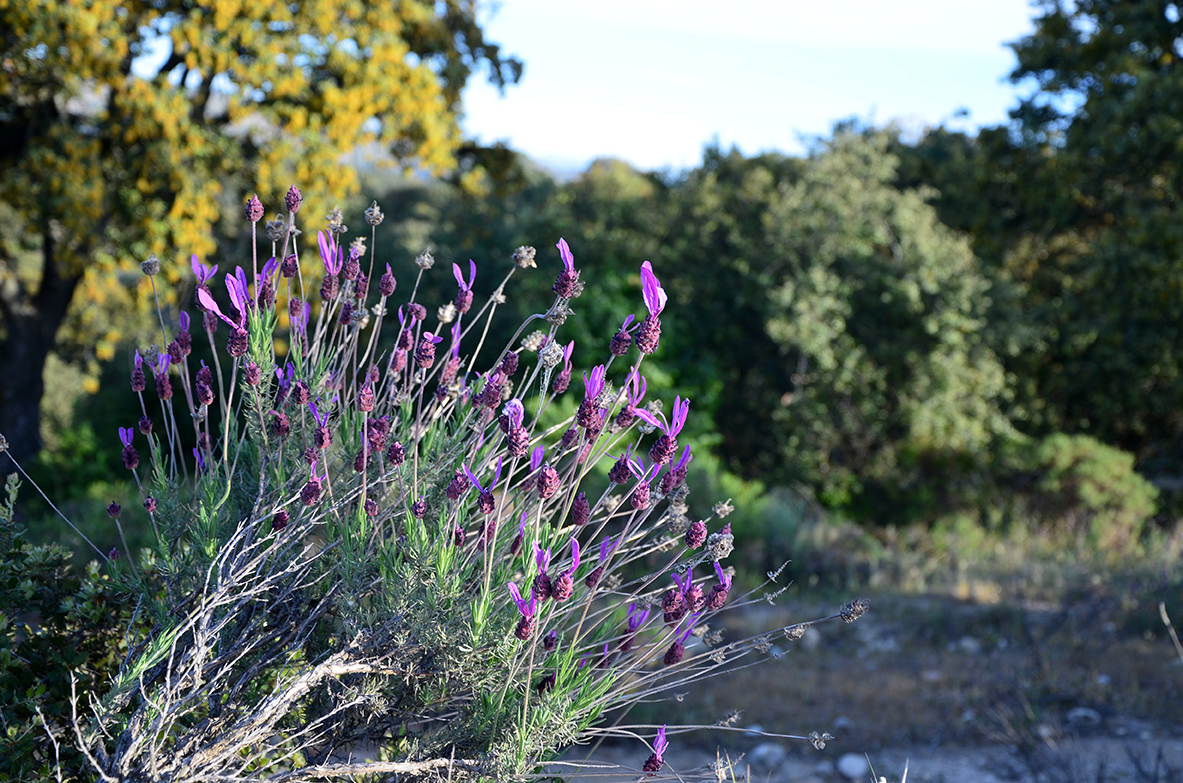
Photo 8: Lavender in an oak grove, one of the best flowers for honey production and save the bees
h) Quince tree
Another fruit tree that can be found in gardens in Madrid is the quince tree. This tree produces the delicious quince fruit, which is used to make quince jelly and other confectionery products.
Likewise, the flower of the quince is beautiful. A flower larger than orange blossom flowers.
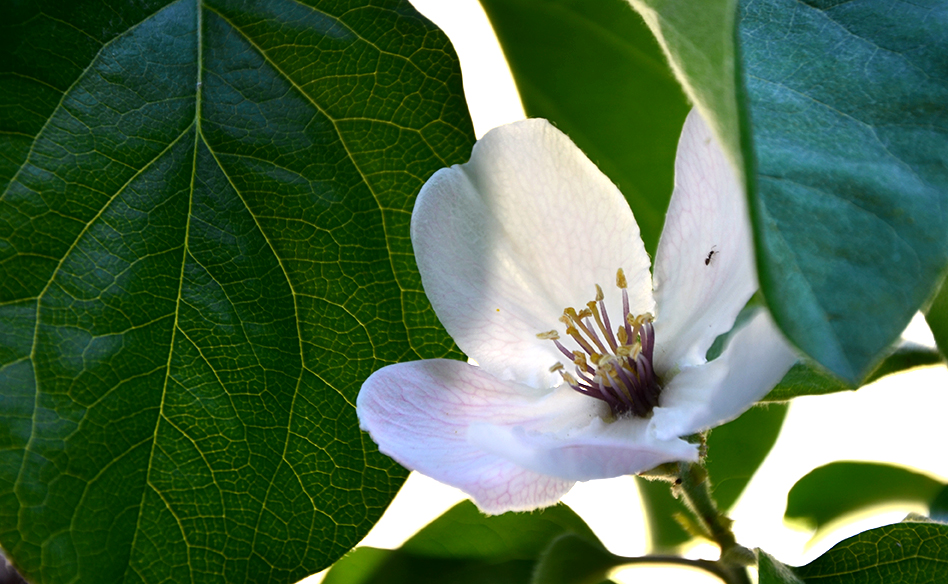
Photo 9: Quince flower
i) Lilies
Finally the purple lilies I grew. Beautiful purple flowers which I think are not honey flowers.
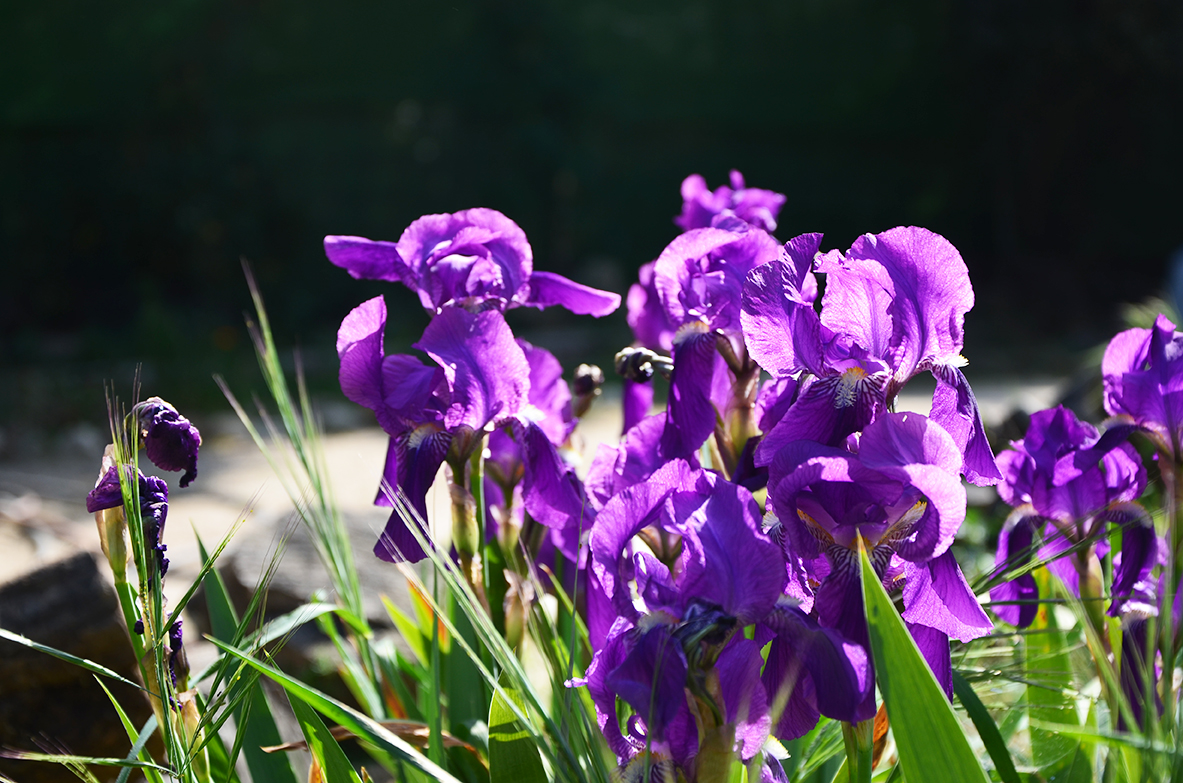
Photo 10: Purple lily flowers
c) To finish
I took all these pictures during the Easter week of 2017. This spring I enjoyed the beauty of nature and took out my camera again. I dedicated another afternoon to two of my hobbies, contact with nature and photography. Nature, a luxury that we should take care of as we take care of ourselves.
Another thing that is very important that we have to take care of, is the time to take care of those plants in the attacks of other insects. This is what I mean if you are going to spray your plants. Because, by spraying the plants, you can kill the bees. Consequently, if you want to spray your plants, you should do it before flowering to avoid poisoning them.
2. More honey flowers
Also in your garden, you can grow these other flowers that will provide food for the bees. Furthermore, they are also very useful in the kitchen and for making natural cosmetic products.
Scientific name |
Common name |
Uses |
| Agastache rugosa | Agastache rugosa | Aromatic and food |
| Agastache foeniculum | Agastache foeniculum | Aromatic and food |
| Ammi visnaga | Ammi visnaga | Medicinal |
| Bocopa monnieri | Bocopa monnieri | Medicinal |
| Borago officinalis | Aromática | |
| Carum roxburghianum | Spice and medicinal | |
| Coriandrum sativum | Edible | |
| Cosmos sulphurecum | Aromatic | |
| Desmodium canadense | Medicinal legume plant | |
| Dracocephalum moldavicum | Aromatic | |
| Helianthus Arikara | Edible and medicinal | |
| Helianthus Taiyo | Edible and medicinal | |
| Helianthus Grand primerose | Edible and medicinal | |
| Ocimum basilicum (Citriodorum) | Culinary | |
| Ocimum sanctum Culinary | Culinary | |
| Ocimum basilicum (Trisiflora) | Culinary | |
| Ocimum sp. (Thai) | Culinary | |
| Origanum majorana | Culinary | |
| Matricaria recutita | Medicinal | |
| Monarda citriodora | Medicinal | |
| Nigella damascena | Aromatic and medicinal | |
| Shizonepeta japonica | Medicinal | |
| Silphium | Medicinal | |
| Phacelia tanacetifolia | Edaphological use | |
| Lupinus albus (Amiga) | Edaphological use | |
| Lupinus angustifolius | Edaphological use |
Table 1: Melliferous plants
3. Fruits and vegetables that feed bees
More specifically, among the plants grown in our orchards that provide food for our bees, we have the following:
a) Almond tree
The almond tree is a tree that provides us with almonds. This tree is one of the first to flower, so it is the first to be pollinated by bees. Moreover, this tree is found in the Mediterranean climate zone of Spain and in generally poor soils.
b) Apple tree
The apple tree is another fruit tree that is very common in the north of Spain. It produces apples, which are used in food, cosmetics, vinegar and wine production.
c) Cucumbers
Cucumbers are a vegetable widely used in the Mediterranean cuisine to prepare refreshing dishes such as salads and gazpachos. Cucumbers have flowers and these are also pollinated by bees, although in many greenhouses bumblebees are used to pollinate them.
d) Blueberries
Blueberries are a plant that produces these desirable products. In Spain, the cultivation of blueberries is quite localised, as most of them come from the United States, which is the largest producer. It is in this country where we can buy blueberry honey, honey that comes from the flowers of the blueberry.
e) Onions
Bees obtain food from onion flowers, from their flower heads, from which they extract pollen and nectar. In the case of our food, we take advantage of its bulb, and this is usually present in Mediterranean dishes whenever we like it. Some people do not like onions.
f) Pumpkins
The pumpkin, a plant from the cucurbitaceae family, like tomatoes, is also visited by bees, but especially by wild bees. Pumpkins bear the fruit of the same name and are widely used in autumn in the preparation of purees and some varieties of pumpkins are used in the preparation of angel hair.
g) Strawberries
The strawberry is a small plant that produces delicious strawberries. A fruit that is even more delicious if it has been well pollinated by bees.
4. Bees in olive groves
The Ecology, Evolution and Conservation of Mediterranean Vegetation Group of the University of Jaén (UJA) has managed to identify 13 solitary bees. These bees inhabit olive groves in Andalusia, nesting in canopies and in the trunks of olive trees. Also, these insects do not form hives and live alone, but they are a good indicator of the ecological richness of olive groves.
This study was carried out by Carlos Martincez-Núñez and published in the scientific journal “Ecological indicators”.
Sources:
El periódico el Español
Blog gardens. Flowers for honey and your garden

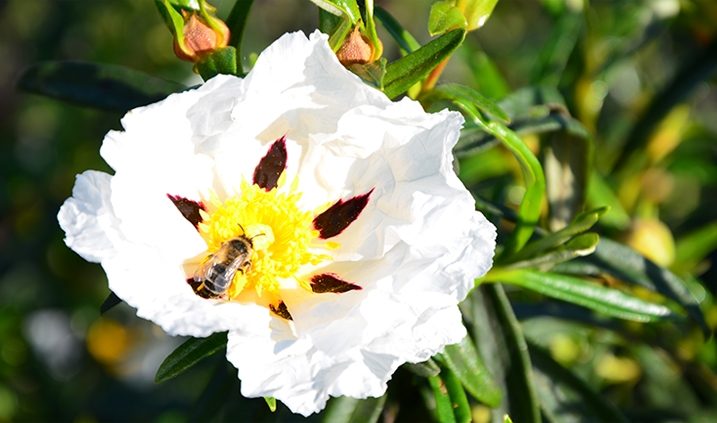





Leave a Reply
Want to join the discussion?Feel free to contribute!